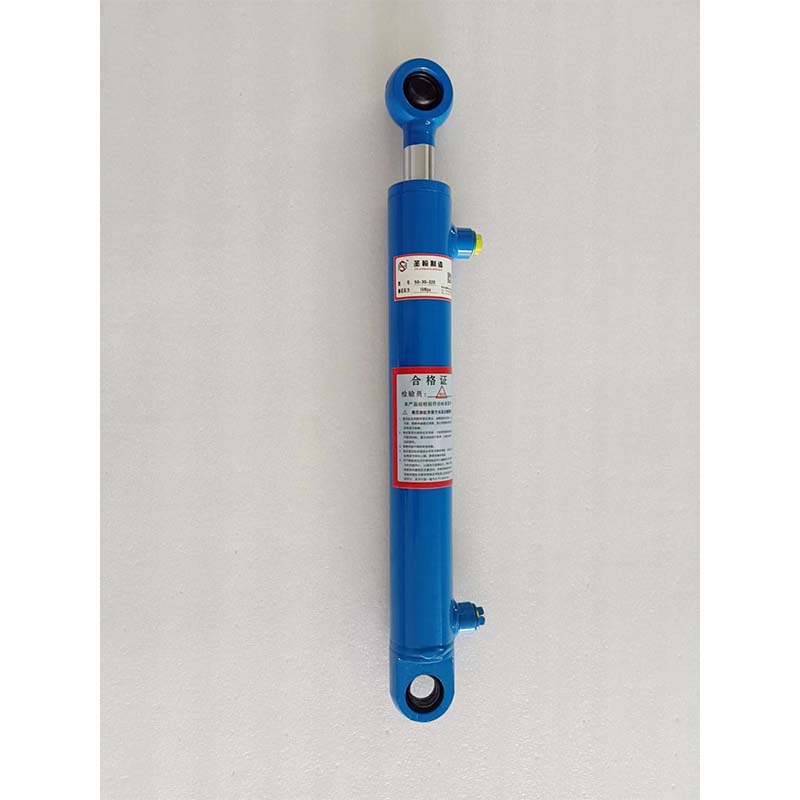Dec . 10, 2024 11:44 Back to list
Spring-Loaded Hydraulic Cylinder Solutions for Enhanced Performance and Efficiency
Understanding Spring Hydraulic Cylinders A Comprehensive Overview
Hydraulic cylinders are essential components in various industrial applications, machinery, and vehicles, providing the necessary power to perform heavy lifting and precise movement operations. Among the many designs available, spring hydraulic cylinders stand out due to their unique concept and functionality. This article delves into the mechanics, applications, benefits, and maintenance aspects of spring hydraulic cylinders.
What is a Spring Hydraulic Cylinder?
A spring hydraulic cylinder combines the principles of hydraulic force and mechanical spring action. In essence, it operates by using fluid pressure to create linear motion while utilizing a spring to return the cylinder to its original position. This dual mechanism allows for quicker responsiveness and enhances the efficiency of operations requiring repeated strokes.
The design typically includes a cylinder barrel, piston, rod, and spring, which are integrated to allow for both powered extension and spring-loaded retraction. The hydraulic fluid fills the cylinder, and when the pressure is applied, the piston moves the rod outward. Once the pressure is released, the internal spring automatically retracts the rod, returning the system to its initial state.
Applications of Spring Hydraulic Cylinders
Spring hydraulic cylinders are widely utilized across various industries. Their applications include
1. Manufacturing In production lines, these cylinders facilitate automated processes, such as assembly and packaging. They can quickly lift and position heavy materials, improving throughput and labor efficiency.
2. Construction In heavy machinery like excavators and bulldozers, spring hydraulic cylinders provide the necessary force for multiple functions such as digging, lifting, and moving soil.
3. Automotive In automotive manufacturing, spring hydraulic cylinders are used for clamping during welding and assembly operations. They help ensure precision and speed in tasks that require repetitive movements.
4. Agriculture Agricultural machinery utilizes these cylinders for functions like planting and harvesting, where powerful, reliable movement is essential for optimizing workflows.
5. Aerospace In the aerospace sector, precision is key. Spring hydraulic cylinders are utilized in various applications like landing gear mechanisms, where reliable retraction and extension are critical.
Advantages of Spring Hydraulic Cylinders
The use of spring hydraulic cylinders presents several advantages that cater to the needs of various industries
spring hydraulic cylinder product

1. Efficiency The combination of hydraulic and spring action reduces cycle times, allowing faster operational speeds and improved productivity.
2. Simplicity The design is relatively simple, making it easier to integrate into existing systems and requiring less complex controls compared to other cylinder types.
3. Cost-Effectiveness With fewer components and reduced cycle times, spring hydraulic cylinders can lead to lower operational costs and significantly increase overall efficiency.
4. Safety The built-in spring mechanism provides a fail-safe return action, ensuring that systems can quickly return to a safe position in case of a power failure or system malfunction.
5. Versatility These cylinders can be customized to meet specific application requirements, including varying stroke lengths, forces, and mounting configurations.
Maintenance of Spring Hydraulic Cylinders
To ensure optimal performance and longevity of spring hydraulic cylinders, regular maintenance is crucial. Here are some key maintenance tips
1. Regular Inspections Check for wear, leaks, and any signs of damage to the cylinder and its components. Early detection can prevent major failures.
2. Fluid Maintenance Ensure the hydraulic fluid is clean and at the correct level. Contaminated or inadequate fluid can affect performance and lead to premature wear.
3. Lubrication Keep all moving parts adequately lubricated to minimize friction and wear.
4. Spring Checks Inspect the spring for any signs of fatigue or breakage, as this can compromise the cylinder’s effectiveness.
5. Prompt Repairs Address any issues immediately to prevent further damage and ensure the system operates smoothly.
Conclusion
In conclusion, spring hydraulic cylinders are integral components across diverse industries, offering efficiency, safety, and versatility. Their unique design allows them to respond rapidly and reliably in applications that require both lifting and returning actions. With appropriate maintenance and care, these cylinders can enhance productivity, reduce costs, and provide lasting performance, making them a valuable choice for engineering and industrial solutions.
-
Fork Lift Power Units - Hebei Shenghan | Efficiency, Reliability
NewsJul.13,2025
-
1.5-Ton Turbocharged Cylinder-Hebei Shenghan|Hydraulic Solution,Energy Efficiency
NewsJul.13,2025
-
Auto Hoist Power Units-Hebei Shenghan|Efficiency&Industrial Lifting
NewsJul.13,2025
-
Double Acting Power Units-Hebei Shenghan|Hydraulic Solutions,Industrial Efficiency
NewsJul.13,2025
-
1.5 Ton Lifting Cylinder 70/82-40-290-535 - High-Performance Hydraulic Solution | Hebei Shenghan
NewsJul.13,2025
-
Fork Lift Power Units - Hebei Shenghan | Efficiency&Reliability
NewsJul.13,2025
